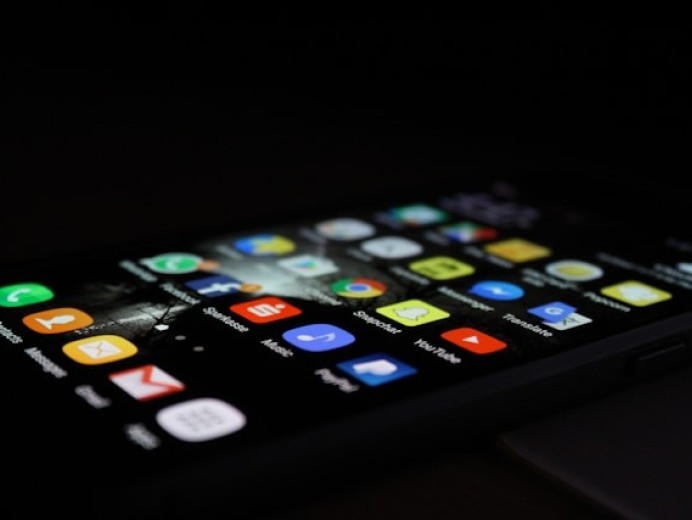UX Trends: How To Gamify An App
Marketing a mobile app is relatively similar to how you should market a website. Additionally, the same question will be asked for both: which is better, customer retention or acquiring new customers?
With mobile apps, it can be quite expensive to acquire new users to grow the database. That is why it is usually better to aim to retain the current users that you have on your database. Additionally, these users that you do retain will automatically promote your app for you, especially if they believe it is worth recommending.
Many businesses around the world have started to realise the importance of retaining their existing customers and users, which is why many mobile marketers are prioritising them through gamification. It isn’t just mobile app developers who understand the importance, it includes companies in retail, creative design agencies, the food industry and many more who understand the importance of app gamification.
What Is Gamification?
Gamification is a term used in the marketing industry for the use of game mechanics and design techniques for mobile apps. This is a method to help improve motivation and user engagement. There are several ways that this can be done. In most cases, it would include elements such as points, badges, leaderboards, challenges and rewards. This instantly creates a more satisfying experience for the user, increasing their chances of returning the next day.
Duolingo is a prime example of excellent use of gamification. They offer leaderboards, rewards for consecutive daily appearances, challenges and much more to help encourage the user to return to their app. It's these very simple features that help to keep the user motivated when they are using the app.
Types of App Gamification
There are many different methods, but there are two main types of app gamification.
Marketing - Marketing will often include in-app elements that will promote products, services initiatives to help improve the overall user experience. Going back to Duolingo as our example, they have a premium version of the app. This removes ads in between a user’s challenges, allowing them to freeze their streak, unlimited hearts and just provides a better personalised experience. It is a great way for Duolingo to increase the revenue of its app.
User Experience - In regards to user experience for mobile apps, this is essentially what it says on the tin, to improve the user’s experience. An example of how Duolingo gamified their app for user experience was creating streaks, leaderboards and badges for the user. This gives them a sense of accomplishment, even after completing a short task/ challenge.
How To Gamify An App?
If you are a marketer who specialises in apps and your user retention numbers are low, there are a few methods of improving this. Let's take a look at how to gamify an app.
Onboarding Gamification
This is where the app will provide a progress bar of the task/mission/challenge to the user. At the end of completion, the user will receive points, maybe even a discount or a free gift. There are different ways that app gamification can provide awards to the user, so it depends on what the app's aim is.
Loyalty Gamification
Loyalty gamification is one of the most popular methods of improving customer retention. Again, a point system for the user returning each day. Additionally, points can be given upon the completion of specific tasks in the app and streak functions can be put in place to increase daily usage. These points that the user has built up can be used for discounts or even real-life money. For example, Greggs would give a free sausage roll after purchasing a certain number. McDonald's provides its customers with points when they buy an item of food or drink.
E-commerce Gamification
E-commerce gamification is another method on how to gamify an app. This is what we discussed previously in terms of McDonald's providing their customers with points after each purchase of a product when they scan their app. This incentive is a great way to encourage people to buy products and use the app because the user/customer will know they will get a discount or an item for free.
Learning Gamification
Learning gamification is another method to help increase customer retention. For example, if a new feature has been released on the app, you can offer a progress bar for how long it will take the user to complete learning this new feature. Again, this encourages users to return.
Profile Gamification
Profile gamification is another method. This is a simple technique that creates a more personalised experience for the user. For example, when they are completing the look of their profile, they can be provided with additional points which they can use in the app. A progress bar can also be provided with this to show how much of their profile they have customised/ completed.
Design Gamification
Last but not least is design gamification. This is where you can incorporate elements into an app’s visual design. This is essentially progress bars, or even hearts, which we discussed earlier with Duolingo.
How Do You Know If Your App's Gamification Has Worked?
Once you have understood how to gamify an app and put the methods in place, you also need to be able to measure its success. If app gamification has been successful, then you can look to continue improving this to help retain your users/customers for even longer. Furthermore, it can help to identify areas that also require improvement.
Engagement Rate
One of the first things you will notice if your app's gamification was a success is that there will be a much higher engagement rate. This primarily focuses on the number of users who have interacted with the gamified elements.
Length of Sessions
Another method would be to review the length of time spent on the app. For e-commerce apps, it will include an increase in the number of sales via the app.
Retention Rate
Retention rate is something else to review once the gamification elements are in place. This primarily focuses on the users who interact with the gamified elements of the app.
Conversion Rate
Conversion rate is a metric that is often looked at, and it is when gamification is applied. This reviews the percentage of users who convert after interacting with the gamified elements.
Lifetime Value
Increasing the lifetime value is a priority in these circumstances, especially when implementing gamification elements. Once this has been in place for a lengthy period of time, the lifetime value will be viewed with those who have interacted with the gamified elements.
Final Opinions: Why You Should Consider App Gamification
It doesn’t matter whether your app is designed for e-commerce, lifestyle, games, productivity or other forms of apps; improving the engagement rate of these apps is essential to improve the lifetime value of a customer. Keeping customers and users is essential for more profit rather than attracting new customers.




